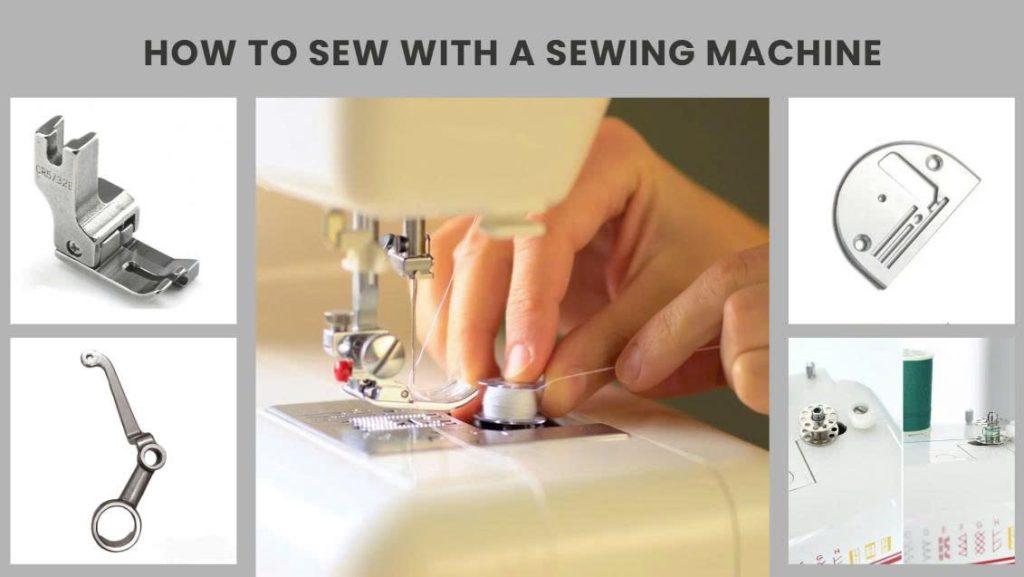Blog
How to Sew with a Sewing Machine: A Beginner’s Step-by-Step Guide
Sewing machines have transformed the way we create, repair, and design garments, offering speed, accuracy, and flexibility. Yet, for someone just starting out, using a sewing machine can feel intimidating. From learning the parts of the machine to sewing your very first straight line, there’s a lot to take in. This beginner’s guide will simplify the process and help you start your sewing journey with confidence.
Whether you’re mending a favorite shirt, exploring quilting, or dreaming of making your own clothes, mastering the basics of sewing by machine is an invaluable skill. By the end of this guide, you’ll understand the essentials of your sewing machine and feel ready to take on beginner-friendly projects.
Why Learn to Sew?
Sewing is more than just a practical skill—it’s a creative outlet that allows you to design unique items, repair well-loved pieces, and save money on home décor or clothing. From crafting a dress that fits perfectly to stitching a handmade gift, sewing provides both satisfaction and freedom. Let’s begin by covering the basic knowledge every new sewist should have.
Sewing 101: The Fundamentals
At its core, sewing combines fabric, thread, and stitches to create something new. The most essential stitch is the straight stitch, which forms the basis for more advanced stitches like zigzag. To get started, familiarize yourself with key sewing terms and the parts of your machine.
Key Machine Components
Understanding how these parts work will make operating your machine much easier.
Essential Terms
Practice threading the machine and identifying these features before you dive into sewing.
Setting Up Your Machine
Proper setup ensures smooth and even stitching.
Threading the Machine
- 1Place the spool on the pin.
- 2Pull the thread through the guides and take-up lever.
- 3Thread the needle carefully.
Winding and Loading the Bobbin
- 1Wind the bobbin with thread using the bobbin winder.
- 2Place it into the bobbin case with the thread flowing easily.
Adjusting Settings
Choosing Beginner-Friendly Fabrics
Not all fabrics are equally easy to sew. Beginners should stick to cotton or broadcloth—sturdy and easy to handle. Avoid slippery fabrics like silk or stretchy materials like jersey until you’ve gained more experience.
Tips:
Mastering Your First Straight Stitch
The straight stitch is the foundation of sewing.
Steps:
- 1Position your fabric under the presser foot.
- 2Align the edge with the guide on the needle plate.
- 3Lower the presser foot and gently press the pedal.
- 4Let the feed dogs move the fabric without pulling.
For accuracy, practice stitching on scrap fabric in straight lines and use masking tape as a seam guide.
Expanding Basic Techniques
Once you’ve mastered straight lines, try these:
Sewing Safely and Effectively
With patience, sewing becomes second nature and allows for professional-looking results.
Troubleshooting Made Simple
Most issues are solved by double-checking threading, bobbin placement, or needle condition.
Taking Your Skills Further
When you’re comfortable with basics, explore:
Beginner Project Ideas
Conclusion
Learning to use a sewing machine opens a world of possibilities—from practical fixes to creative projects. By mastering setup, threading, straight stitching, and fabric basics, you’ll build a strong foundation. Start with simple projects and gradually challenge yourself with more advanced designs.
Every skilled sewist started as a beginner. With patience and consistent practice, you’ll soon be sewing with confidence and pride.

